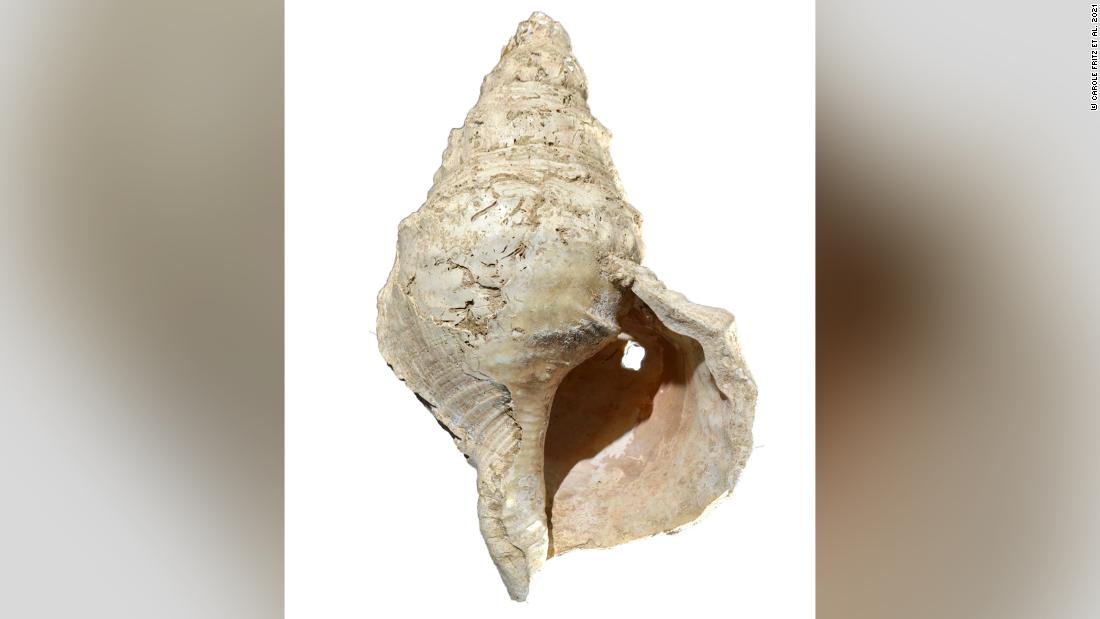The shell was largely overlooked when it was found at the Marsoulas Cave in the Pyrenees mountain range in 1931, but researchers from the French National Center for Scientific Research (CNRS); the Museum of Toulouse; the University of Toulouse – Jean Jaurès; and the Musée du quai Branly – Jacques-Chirac released a sound recording as part of a new study published Wednesday.

The people who manufactured the instrument were probably hunter-gatherers. Credit: © Carole Fritz et al. 2021 / Gilles Tosello
The tip of the shell of the sea snail (Charonia lampas) is broken and forms an opening of 1.4 centimeters in diameter. The point is the hardest part of tracking, researchers said in a press release. The interruption is therefore not accidental.
There is also evidence of cutting, holes and decoration using hematite, a red pigment used in the cave paintings that make the Marsoulas Cave famous.
Researchers worked with a horn player to verify their hypothesis that the shell was used to produce sounds, with the musician making noises near the notes C, C-sharp and D.
The fact that the opening is irregular and covered with an organic layer, researchers thought there would originally be a nozzle.
Gilles Tosello, co-author of the study and archaeologist at the University of Toulouse, says the presence of nozzles on other shell shells from around the world carries weight in this interpretation.
According to researchers, carbon updates on charcoal and drabene from the same archaeological layer as the shell have shown that the objects date from 18,000 years ago. This makes the shell the oldest wind instrument of its kind.
The people who made it, however, did not necessarily use the shell to make music, Tosello told CNN.
“It could have been used as a communication tool,” he said, explaining that it may have been used in rituals related to art in the cave.
Tosello said researchers also found similarities with materials found in caves along the Atlantic coast in northern Spain.
They would have to move around because they would run out of animal hunting if they stayed in one place for too long, he explained.
Researchers will now work on an accurate 3D replica of the shell to find out more about a small perforation with a diameter of 0.4 centimeters in its body, Tosello told CNN. They will also investigate the extent to which the sound produced by the shell can move.
